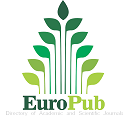Contribution of the Agricultural Sector to the National Economies: A General Assessment for the 1995-2015 Period.
Abstract
In the process of structural change, the share of the agricultural sector is decreasing in both GDP and total employment. In this process, while the share of agricultural sector decreases, the share of manufacturing industry and service sector is gradually increasing. This structural change shows the development of countries. However, regardless of the level of development, the agricultural sector is an important sector for all economies. Agricultural sector is an important sector in terms of providing the nutritional needs of the growing population, basic nutrients and inputs and raw materials to other sectors. At the same time, factors such as climate crisis, natural disasters and fertile soil loss reveal the importance of the agricultural sector. For that purpose, in this study, the general view of the agricultural sector in the economy in some selected countries was analysed for 1995-2015 period. Input-output analysis was performed using national input-output tables in the Organization for Economic Cooperation and Development (OECD) database. According to the findings, as the development level of the countries increases, the value added and employment of the agricultural sector decreases. In addition, agricultural production in countries, except the Netherlands, is generally towards domestic demand. Finally, respectively, the countries with the highest import dependency in the agricultural sector are the Netherlands, South Africa, France, Spain, Romania, Russia, USA, Japan, Brazil, Turkey, Indonesia, China, and India.
Metrics
References
Ağazade, S., & Eştürk, Ö. (2019). Türkiye Tarım Sektöründe Emek Verimliliği ve İstihdam İlişkisinin İncelenmesi. Sosyal Güvenlik Dergisi, 9(2), 237-254. doi:10.32331/sgd.658626 DOI: https://doi.org/10.32331/sgd.658626
Aktaş, E. (2006). Çukurova Bölgesi'nde Pamuk Arz Duyarlılığının Tahmnini Üzerine Bir Çalışma. Tarım Ekonomisi Dergisi, 12(1), 3-8.
Aktaş, E. (2006). Küreselleşme, Yoksulluk ve Genetiği Değiştirilmiş Tarım Ürünleri. VII. National Congress of Agricultural Economics. 2, s. 614-620. Antalya: University of Akdeniz. https://mpra.ub.uni-muenchen.de/8657/ adresinden alındı
Aktaş, E., & Doğan, H. (2019). İç Ticaret Hadlerinin Tarımsal arazi Satışları Üzerine Etkisi: Çukurova Örneği. Çukurova Üniversitesi Sosyal Bilimler Enstitüsü Dergisi, 28(2), 45-54. doi:10.35379/cusosbil.616754 DOI: https://doi.org/10.35379/cusosbil.616754
Aktaş, E., & Şahin, A. (2019). Harris-Todaro Göç Modeli: Türkiye Örneği. Çukurova Üniversitesi Sosyal Bilimler Enstitüsü Dergisi, 28(1), 222-234.
Aktaş, E., Altıok, M., & Songur, M. (2015). Farklı Ülkelerdeki Tarımsal Destekleme Politikalarının Tarımsal Üretim Üzerine Etkisinin Karşılaştırmalı Analizi. Anadolu Üniversitesi Sosyal Bilimler Dergisi, 15(4), 55-71. doi:10.18037/ausbd.08912 DOI: https://doi.org/10.18037/ausbd.08912
Bingöl, Ş., & Meçik, O. (2021). Yeni Kapitalizm ve Türkiye’de Tarım Sektörünün Dönüşümü. Afyon Kocatepe Üniversitesi Sosyal Bilimler Dergisi, 23(1), 586-605. doi:10.32709/akusosbil.804695 DOI: https://doi.org/10.32709/akusosbil.804695
Boban, D., Radmila, T., & Valentina, M. (2020). Contribution of the Agriculture to the Economic Development of Serbia. Ekonomski Signali, 15(2), 1-14. doi:10.5937/ekonsig2002001D DOI: https://doi.org/10.5937/ekonsig2002001D
Doğan, A. (2009). Ekonomik Gelişme Sürecine Tarımın Katkısı: Türkiye Örneği. Sosyal Ekonomik Araştırmalar Dergisi, 9(7), 365-392.
Duman, A., & Özgüzer, G. E. (2013). An input-output analysis of rising imports in Turkey. Ekonomik Yaklaşım, 23(84), 39-54. doi:10.5455/ey.34105 DOI: https://doi.org/10.5455/ey.34105
Erduman, Y., Eren, O., & Gül, S. (2019). The Evolution of Import Content of Production and Exports in Turkey: 2002-2017. Working Paper No: 19/09. Ankara: Türkiye Cumhuriyet Merkez Bankası.
Ersoy, M., & Özsoy, M. Ş. (2017). Tarım Finansmanının Kalkınmadaki Rolü ve Önemi: Bir Model Önerisi. Marmara Üniversitesi Öneri dergisi, 12(47), 1-14. doi:10.14783/maruoneri.v12i27581.290460 DOI: https://doi.org/10.14783/maruoneri.v12i27581.290460
FAO. (2015). Agriculture Transformation of Middle-Income Asian Economies: Diversification, Farm Size and Mechanization. ESA Working Paper No. 15-04. (D. Dawe, Dü.) Rome: Food and Agriculture Organization of The United Nations.
FAO. (2018). The Future of Food and Agriculture - Alternative Pathways to 2050. Rome: Food and Agriculture Organization of the United Nations.
Johnson, R. C., & Noguera, G. (2012). Accounting for intermediates: production sharing and trade in value added. 86, 224-236. doi:10.1016/j.jinteco.2011.10.003 DOI: https://doi.org/10.1016/j.jinteco.2011.10.003
Khan, W., Jamshed, M., & Fatima, S. (2020). Contribution of Agriculture in Economic Growth: A Case Study of West Bengal (India). Journal of Public Affairs, 20(2), 1-10. doi:10.1002/pa.2031 DOI: https://doi.org/10.1002/pa.2031
Kılavuz, E., & Erdem, İ. (2019). Dünya Tarım 4.0 Uygulamaları ve Türk Tarımının Dönüşümü. Social Sciences (NWSASOS), 14(4), 133-157. doi:10.12739/NWSA.2019.14.4.3C0189 DOI: https://doi.org/10.12739/NWSA.2019.14.4.3C0189
Kurtar, Ç., & Delal, İ. (2019). Türkiye ile Çin Tarım Ürünleri Dış Ticaretinin Değerlendirilmesi. Tarım Ekonomisi Araştırmaları Dergisi, 5(2), 108-118.
Los, B., Timmer, M. P., & Vries, G. J. (2015). How Important are Exports for Job Growth in China? A Demand Side Analysis. Journal of Comparative Economics, 43, 19-32. doi:10.1016/j.jce.2014.11.007 DOI: https://doi.org/10.1016/j.jce.2014.11.007
Macedo, A. D., & Lavopa, A. (2018). Tracing Incomes Generated By Domestic and Foreign Demand for Manufacturing. Department of Policy, Research and Staistics Working Paper 04/2018. Vienna: United Nations Industrial Development Organization.
Marconi, N., Rocha, I. L., & Magacho, G. R. (2016). Sectoral Capabilities and Productive Structure: An Input-Output Analysis of The Key Sectors of The Brazilian Economy. Brazilian Journal of Political Economy, 36(3), 470-492. doi:10.1590/0101-31572016v36n03a02 DOI: https://doi.org/10.1590/0101-31572016v36n03a02
Meliko, M. O., & Oni, S. A. (2011). Input-Output Analysis on The Contribution of Agriculture to The Economy of Limpopo Province, South Africa. African Journal of Agriculture Research, 6(29), 6303-6310. doi:10.5897/AJAR10.925
Muchdie, M., & Imansyah, M. H. (2019). Inter-Sector and Inter-Country Linkages in Indonesian Economy: World Input-Output Analysis. Jurnal Ekonomi Pembangunan: Kajian Masalah Ekonomi dan Pembangunan, 20(2), 232-245. doi:10.23917/jep.v20i2.9057 DOI: https://doi.org/10.23917/jep.v20i2.9057
Nchor, D., & Konderla, T. (2016). Economic Multipliers and Sectoral Linkeages: Ghana and The New Oil secotr. Acta Universitatis Agriculturae Et Sılviculturae Mendelianae Brunensis, 64(2), 635-642. doi:10.11118/actaun201664020635 DOI: https://doi.org/10.11118/actaun201664020635
OECD. (2021). https://www.oecd.org/.
https://stats.oecd.org/Index.aspx?DataSetCode=IOTSI4_2018 adresinden alındı
Uzundumlu, A. S. (2012). Tarım Sektörünün Ülke Ekonomisindeki Yeri ve Önemi. Alınteri Zirai Bilimler Dergisi, 22(1), 34-44.
Vos, R. (2019). Agriculturei the Rural Sector, and Development. D. Nayyar içinde, Asian Transformantions: An Inquiry into the Development of Nations (s. 160-185). United Kindom: Oxford University Press. DOI: https://doi.org/10.1093/oso/9780198844938.003.0007
Wang, Y., & Wang, N. (2021). Exploring the Role of The Fisheries Sector in China's National Economy: An İnput-Output Analysis. Fisheries Research, 243, 1-8. doi:10.1016/j.fishres.2021.106055 DOI: https://doi.org/10.1016/j.fishres.2021.106055
Yasmin, T., & Bekhet, H. A. (2017). Sectoral Capabilities and Productive Structure: An Input-Output Analysis of The Key Sectors of The Malaysian Economy. International Journal of Business Management (IJBM), 2(2), 1-21.






















